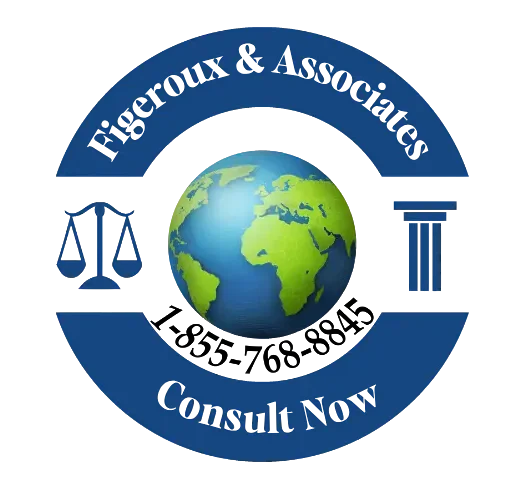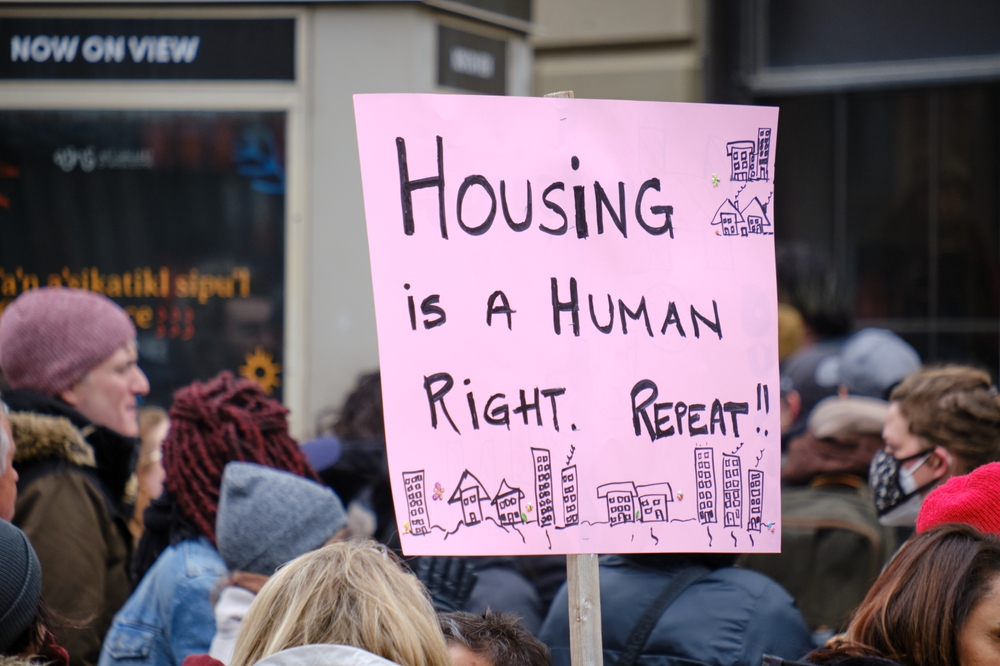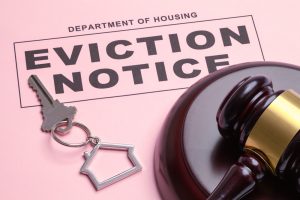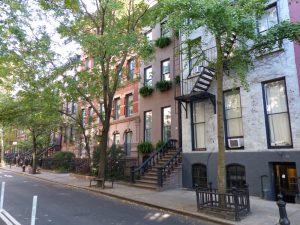Editorial credit: Wandering views / shuterstock.com
Navigating New York City’s complex web of real estate, housing rights, and neighborhood planning can feel overwhelming. Whether you are a tenant fighting for better living conditions, a homeowner looking to understand property taxes, or an advocate seeking data to support vulnerable communities, there are many essential resources available. These tools, created by various city agencies and nonprofits, empower New Yorkers to protect their homes, fight for their neighborhoods, and advocate for a more equitable city. Understanding and accessing these resources is a crucial first step toward building stronger, more informed communities.
One of the most powerful tools available to tenants is the ability to search for building violations through the New York City Housing Preservation and Development (HPD). By simply entering an address into HPD’s Building Information Search, tenants can review open violations, complaints, and inspection records related to their building. This information shines a light on landlords who neglect necessary repairs such as heating failures, lead paint issues, or unsafe building conditions. Tenants facing poor living environments can use this public information to file complaints, advocate for repairs, or bolster cases in Housing Court. For prospective renters, checking a building’s violation history can help them make more informed decisions before signing a lease.
Beyond HPD records, the NYC Buildings Information System (BIS) maintained by the Department of Buildings offers a deeper dive into a building’s full history. The BIS database provides access to construction permits, zoning documents, violations, inspections, and certificates of occupancy. If noisy construction disrupts life in a rental building, or if unsafe scaffolding lingers for months, a BIS search can reveal whether the landlord obtained proper permits or is violating safety rules. The system also helps homeowners and developers ensure that any work planned on their property complies with zoning and construction regulations. Having clear insight into a building’s official records is key for tenants, property owners, and advocates alike.
Knowing who actually owns a building is another critical piece of the housing puzzle. The Who Owns What in NYC? tool, developed by JustFix.nyc, allows anyone to look up the true owner of a property by address. Many times, buildings are owned by hidden LLCs or shell corporations, making it hard for tenants to organize or negotiate repairs. Who Owns What uncovers patterns of ownership across the city, making it easier to see which landlords own multiple properties or to link poor conditions across different buildings back to a single entity. For tenants facing harassment or displacement, having this ownership information can be a major advantage when pursuing legal remedies or organizing collective action.
Zoning laws and land use regulations are powerful forces that shape New York City neighborhoods. The NYC Zoning and Land Use Map (ZoLa) is an interactive tool that helps residents, planners, and advocates understand local zoning designations and planned developments. With ZoLa, users can view whether a block is zoned for residential, commercial, or manufacturing uses, check landmark status, and even explore past and pending rezonings. Zoning maps are essential when communities want to engage in decisions about new developments, such as opposing luxury towers in traditionally working-class neighborhoods or advocating for affordable housing requirements. Having access to easy-to-understand zoning information gives residents a voice in shaping the future of their communities.
Understanding the financial underpinnings of real estate is also critical for both tenants and homeowners. The NYC Department of Finance provides a searchable database where anyone can look up property tax bills, assessment values, exemptions, and payment histories. Reviewing tax information can reveal whether landlords are receiving tax benefits tied to rent regulation or affordable housing obligations. Tenants may discover if a building should be rent-stabilized based on these records, opening doors to protections against unfair rent hikes. Homeowners can ensure they are not overpaying on property taxes and that they are receiving exemptions like the STAR program or Senior Citizen Exemption if eligible.
Beyond property taxes, ownership records and financial encumbrances such as mortgages are accessible through the Automated City Register Information System (ACRIS). ACRIS allows users to search property deeds, mortgage filings, and satisfaction of mortgage records. Reviewing these documents provides a full financial history of a property, helping to reveal speculative purchasing patterns or financial distress that may impact tenants. In a city where real estate speculation drives displacement and gentrification, being able to track ownership changes and heavy mortgage debts can inform neighborhood organizing strategies and policy debates.
Understanding trends at the neighborhood level requires comprehensive statistical insights. The NYU Furman Center offers neighborhood profiles that include data on housing costs, rental burdens, income demographics, racial and ethnic makeup, and the availability of subsidized housing. These statistics allow advocates, journalists, policymakers, and residents to track patterns of gentrification, identify where affordable housing is most at risk, and highlight areas needing greater investment or tenant protections. Data-driven advocacy is vital to shaping policies that protect communities from displacement and inequality.
When it comes to large developments or zoning changes, the Uniform Land Use Review Procedure, better known as ULURP, governs the public review process. ULURP ensures that significant land use proposals pass through a standardized process involving community boards, borough presidents, the City Planning Commission, the City Council, and ultimately the mayor. During ULURP, community members have opportunities to weigh in on proposals that could transform their neighborhoods. Participating in ULURP hearings and submitting testimony is critical for residents who want to advocate for more affordable housing, oppose luxury-only developments, or ensure that projects include public benefits like parks or schools.
Emergency repair needs can arise when landlords neglect urgent issues like heat failures, leaks, or dangerous living conditions. In these cases, tenants have the right to bring an HP Proceeding — a special case in Housing Court demanding that the landlord make necessary repairs. If successful, the court can order the landlord to fix the problem or even impose fines for failure to maintain habitable conditions. HP Proceedings empower tenants to take action independently, without waiting indefinitely for city inspectors or agencies to intervene.
When facing eviction, the right to legal counsel is life-changing. Thanks to NYC’s groundbreaking Right to Counsel law, low-income tenants in Housing Court are entitled to free legal representation. Eviction proceedings can be intimidating and complex, and having a lawyer significantly improves a tenant’s chances of staying housed or negotiating better outcomes. Organizations like Legal Aid Society, Bronx Defenders, and Legal Services NYC provide free legal support under this law. As the program expands citywide, it strengthens the ability of tenants to defend their rights, resist illegal evictions, and maintain housing stability.
For many vulnerable populations — including individuals exiting homelessness, survivors of domestic violence, and those living with mental health challenges — supportive housing offers a pathway to long-term stability. Supportive housing combines affordable rental apartments with on-site services like mental health counseling, employment assistance, and substance use support. These residences are funded through partnerships between government agencies and nonprofit providers. For residents, supportive housing not only provides a home but also a community where healing and recovery are prioritized.
Tenant leadership is crucial to making supportive housing systems accountable. Groups like Supportive Housing Organized and United Tenants (SHOUT) empower residents of supportive housing to advocate for better living conditions, fair leases, and tenant rights. SHOUT’s work reminds policymakers and service providers that supportive housing must always center dignity, tenant voice, and long-term empowerment, not just temporary shelter.
In a city as vast and complex as New York, access to property records, legal rights, financial transparency, and land use data is essential for protecting communities and promoting equity. From searching HPD violations and DOB records to participating in ULURP and fighting for tenants’ rights, New Yorkers have powerful tools at their fingertips. Knowledge of these resources can make the difference between exploitation and empowerment, between displacement and stability. By learning to navigate this information, every New Yorker can become a more effective advocate for themselves, their neighbors, and a fairer, stronger city for all.
Click Here to Schedule a Consultation with Figeroux & Associates Today!



